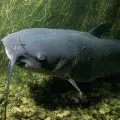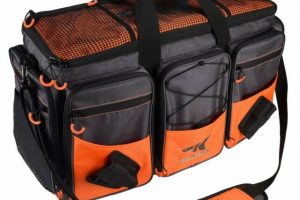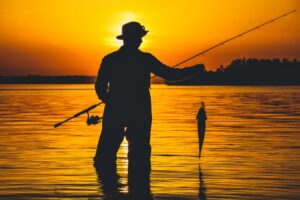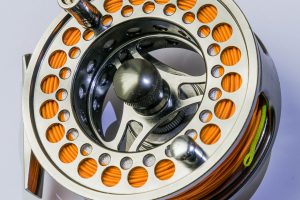If you’re looking for a relaxing and rewarding way to spend an afternoon, bank fishing for catfish might be the perfect activity for you. Not only is it a great way to enjoy the outdoors, but it can also be an exciting way to catch some delicious fish. However, if you’re new to the sport, you might need help figuring out where to start. In this article, we’ll cover everything you need to know to get started with bank fishing for catfish.
First, it’s important to understand the behavior of catfish. These bottom-dwelling fish are most active at night or in the early morning and late afternoon. They also congregate in covered areas like rocks, logs, or vegetation. Knowing where and when to look for catfish will increase your chances of a successful fishing trip.
Once you have a basic understanding of catfish behavior, it’s time to choose the right equipment. From rods and reels to hooks and bait, many options exist. We’ll walk you through the different types of gear available and help you select the best equipment for your needs. With the right gear and know-how, you’ll be well on your way to catching some impressive catfish.
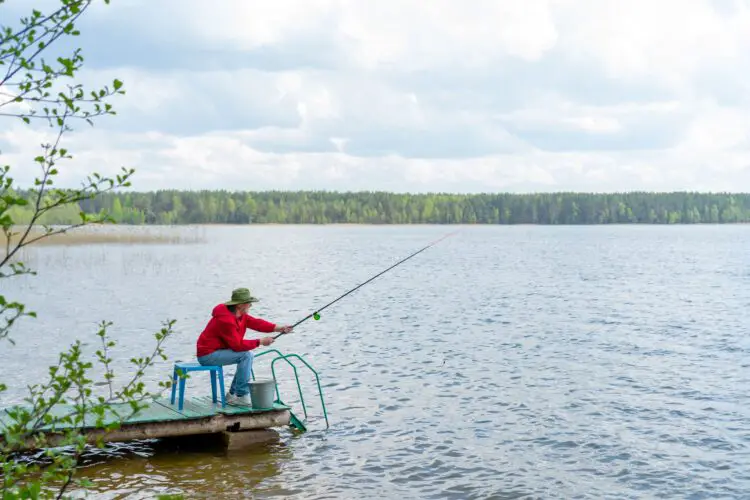
Key Takeaways
- Understanding catfish behavior is vital to successful bank fishing.
- Choosing the right equipment is crucial for a good fishing experience.
- With the right gear and knowledge, bank fishing for catfish can be a fun and rewarding activity.
Understanding Catfish
When it comes to bank fishing for catfish, it’s essential to have a basic understanding of the different types of catfish you may encounter. Catfish are bottom feeders, which means they spend most of their time on the bottom of the water searching for food.
Three types of catfish are commonly targeted by bank anglers: channel catfish, flathead catfish, and blue catfish. Each of these catfish species has unique characteristics that make them different from one another.
Channel catfish are the most common type of catfish found in North America. They are typically smaller, with an average weight of 2-4 pounds. Channel catfish are known for their excellent taste and can be caught using a variety of bait such as worms, chicken liver, and stinkbait.
On the other hand, flathead catfish are larger and more aggressive than channel catfish. They can grow to 100 pounds and are known for their strength and fighting ability. Flathead catfish are typically caught using live bait such as bluegill or shad.
Blue catfish are the largest of the three species, with some specimens reaching over 100 pounds. They are typically found in larger bodies of water, such as rivers and reservoirs. Blue catfish are also caught using live bait such as shad or skipjack herring.
When bank fishing for catfish, paying attention to the water you are fishing in is important. Catfish are typically found near structures such as logs, rocks, and drop-offs in deep water. Look for areas where the water is moving, as catfish prefer current.
In summary, having a basic understanding of the different types of catfish and their behavior can help you become a more successful bank angler. Whether you’re targeting channel catfish, flathead catfish, or blue catfish, use the appropriate bait and pay attention to the water you are fishing in.
Choosing the Right Equipment
When it comes to bank fishing for catfish, choosing the right equipment is crucial. Here are some things to consider when selecting your gear:
Rod and Reel
A medium to heavy action rod with a fast tip is ideal for catfishing. You want a rod with enough backbone to handle big catfish but with a sensitive tip to detect bites. A spinning reel is a good choice for bank fishing, allowing long casts and easy line management.
Line
Use a strong and durable line with a test weight of at least 20 pounds. Mono or braided lines both work well for catfishing, but a braided line is more sensitive and makes it easier to detect bites.
Hooks
For catfish, use a circle hook in sizes 4/0 to 8/0. Circle hooks are designed to hook the fish in the corner of the mouth, reducing the risk of gut hooking and increasing the chances of a successful release.
Weights
Bank fishing for catfish often requires the use of weights to keep your bait on the bottom. Egg sinkers or bank sinkers are good choices, with weights ranging from 1 to 4 ounces depending on the current and water depth.
Rod Holders
Invest in some rod holders to keep your rods secure while waiting for a bite. Bank fishing can be tiring if you hold your rod all day, and rod holders allow you to relax and wait for the fish to come to you.
Selecting the right equipment can increase your chances of catching catfish while bank fishing. Remember always to follow local fishing regulations and practice responsible catch-and-release techniques.
Selecting the Perfect Bait
When it comes to bank fishing for catfish, selecting the right bait is crucial. Different catfish prefer different types of bait, so you’ll need to experiment a bit to find out what works best in your area. Here are some popular options to consider:
Shad
Shad is a popular bait for catfish because it’s oily and has a strong scent. You can use either live or dead shad, but many anglers prefer to use cut shad because it’s easier to handle. Shad can be caught using a cast net or purchased at a bait shop.
Punch Bait
Punch bait is a type of catfish bait that comes in a jar. It’s a sticky substance that you put on a treble hook. Punch bait is known for its strong scent and is effective at attracting catfish. Remember that punch bait can be messy, so wear gloves.
Dip Bait
Dip bait is another type of catfish bait that comes in a jar. It’s a thinner consistency than punch bait and is meant to be used with a sponge or worm. Dip bait is also known for its strong scent and is effective at attracting catfish.
Chicken Liver
Chicken liver is a classic catfish bait that has been used for generations. It’s cheap and easy to find at any grocery store. Chicken liver is best used when fishing in slower-moving water because it tends to fall apart quickly in faster currents.
Stink Bait
Stink bait is a type of catfish bait that comes in a jar. You put a thick, gooey substance on a treble hook. Stink bait lives up to its name and has a strong, pungent odor that catfish find irresistible.
Cut Bait
Cut bait is simply a piece of fish that you cut up and use as bait. It can be fresh or frozen, but many anglers prefer fresh-cut bait because it has a more pungent scent. Cut bait can be used with various fish, including shad, herring, and bluegill.
Nightcrawlers
While not a traditional catfish bait, nightcrawlers can effectively attract catfish. They’re easy to find at any bait shop and can be used with a variety of rigs. Nightcrawlers work best in slower-moving water.
In conclusion, selecting the perfect bait for bank fishing for catfish is all about trial and error. Be bold and experiment with different types of bait once you find what works best in your area. Remember to use gloves when handling messy baits like punch and stink bait.
Mastering the Technique
Mastering the technique of bank fishing for catfish is crucial. Here are a few tips to help you improve your chances of catching catfish:
Casting
When casting, cast your line beyond the area where you think the catfish might be. This will allow your bait to settle in place before you start reeling it in. It’s also essential to keep your line tight while waiting for a bite.
Line and Hold
Using a braided fishing line is recommended when bank fishing for catfish. This type of line is more sensitive, allowing you to feel when a catfish is biting. Hold your line tight when you feel a bite and wait for the catfish to fully take the bait before setting the hook.
Carolina Rig
A Carolina rig is a popular rig used for catfishing. It consists of a weight, bead, swivel, leader, and hook. The weight sits at the bottom of the rig while the bait sits above it. This rig allows the bait to move freely, making it more enticing to catfish.
Movement
When fishing for catfish, it’s important to keep your bait moving. This can be done by slowly reeling in your line or gently twitching your rod. This movement will attract catfish to your bait.
Catfish Rigs
You can use many different catfish rigs, but the key is to find one that works best for you. Experiment with other rigs and baits until you find the right combination that attracts catfish in your area.
By following these tips, you’ll be well on your way to catching catfish while bank fishing. Remember to be patient and keep practicing your technique. Good luck!

Identifying the Ideal Spot
When it comes to bank fishing for catfish, identifying the right spot is key. Here are some factors to consider when selecting your fishing spot:
Shallow vs. Deep
Catfish can be found in both shallow and deep waters. Shallow water is ideal for spawning and feeding, while deep water provides a cooler environment for catfish during the hot summer months. Consider the time of year and the water temperature when selecting your spot.
Structures and Vegetation
Catfish like to hide in structures and vegetation, such as logs, current breaks, and brush piles. Look for areas with natural or artificial structures that provide cover for catfish.
Lake vs. Riverbank
Whether you’re fishing in a lake or a river, the bank can provide good spots to catch catfish. Look for areas where the current slows down or where the water is deeper near the bank.
Deep Holes
Deep holes in the water can also be good spots to catch catfish. These holes provide cooler water and can be found in both lakes and rivers.
Lake Texoma
If you’re fishing in Lake Texoma, consider targeting the rocky areas near the dam—catfish like to hide in the rocks and feed on the baitfish that congregate there.
Remember always to check the local regulations and obtain any necessary permits before fishing. With these factors in mind, you’ll be well on your way to identifying the ideal spot for bank fishing for catfish.
Fishing in Different Environments
When it comes to bank fishing for catfish, the environment you choose to fish in can significantly affect your chances of success. Here are a few tips for fishing in different environments:
Rivers and Streams
If you’re fishing in a river or stream, look for areas where the current is slower, such as eddies or behind rocks. Catfish will often hang out in these areas, waiting for food to come to them. Additionally, if it’s raining, try fishing in the downstream areas of the river or stream. The rain will wash food into the water, which can attract catfish.
Bridges and Obstacles
Bridges and other obstacles can create great fishing spots for catfish. Look for areas where the water is deeper, and the current is slower. Catfish will often hang out in these areas, waiting for food to come to them. Additionally, if fishing near a bridge, try casting your line near the pillars. Catfish will often hang out in the shadows created by the pillars.
Ponds and Lakes
When fishing in a pond or lake, look for areas where the water is deeper and the bottom is muddy. Catfish will often hang out in these areas, as they provide cover and a source of food. Additionally, if you hear a splash in the water, try casting your line in that area. Catfish will often investigate the sound, thinking it might be food.
Remember, no matter where you’re fishing, it’s good to be patient and persistent. With the correct technique and a little luck, you’ll reel in catfish in no time.
Using Hooks and Floats Effectively
Using hooks and floats effectively can make all the difference when it comes to catfishing. Here are some tips to help you get the most out of these essential tools:
Hooks
Choosing the right hook is crucial for a successful catfishing trip. Circle hooks are a popular choice, as they are designed to hook the fish in the corner of the mouth, making it easier to release them back into the water. It’s important to let the fish take the bait and hook themselves before reeling them in when using circle hooks.
Floats
Floats can be used to keep your bait off the bottom and in the strike zone, making them a valuable tool for catfish anglers. Slip floats are a popular choice, as they allow you to adjust the depth of your bait easily. When using a slip float, set it at the proper depth for the type of catfish you’re targeting.
Leaders and Weights
A leader is a length of line that connects your hook to your main line. It would be best if you used a strong leader to handle the weight of the fish you’re targeting. Adding a weight to your line can help keep your bait in the strike zone and prevent it from drifting away in the current.
Swivels
Swivels can be used to prevent your line from twisting and tangling. When using a swivel, choose one strong enough to handle the weight of your target fish.
Bobbers
Bobbers can keep your bait at a specific depth and alert you when a fish is biting. When using a bobber, adjust it to the proper depth for the type of catfish you’re targeting.
By using hooks and floats effectively, you can increase your chances of catching catfish and have a more successful fishing trip.
Additional Tips and Tricks
If you’re looking to catch more catfish while bank fishing, here are some additional tips and tricks to consider:
- Use the Right Gear
Make sure you have the right gear for the job. A medium to heavy action rod with a strong backbone and a good reel is essential. Use a line with a test weight of at least 20 pounds, and consider using a fluorocarbon leader to reduce visibility.
- Use the Right Scent
Catfish have a keen sense of smell, so using the right scent can make a big difference. Some popular scents for catfish include chicken liver, garlic, and anise. You can also use commercial catfish attractants.
- Use the Right Sink
The right sink can help you get your bait down to where the catfish are. Consider using a sinker that matches your fishing conditions, such as a bullet sinker for rocky bottoms or a bank sinker for muddy bottoms.
- Use the Right Lures
While catfish are primarily bottom feeders, they can also be caught on lures. Consider using lures that mimic the catfish’s natural prey, such as gizzard shad or crawfish.
- Consider Taste
Catfish have taste buds all over their bodies, so the taste of your bait can be just as important as the scent. Consider using naturally appealing baits for catfish, such as chicken liver or worms.
- Try Shore Fishing
Shore fishing can be a great way to catch catfish. Look for areas near the shore where the water is deeper, such as drop-offs or channels. You can also chum the water with bait to attract catfish.
Remember, catfish can be finicky, so don’t get discouraged if you don’t catch anything right away. With the right gear, scent, sink, and bait, you’ll increase your chances of landing a big one.
Conclusion
Now that you have learned the basics of bank fishing for catfish, you are ready to hit the water and start catching some fish. Remember to choose the right gear, bait, and location to increase your chances of success.
When it comes to catfishing, patience is key. Keep going if you don’t catch anything right away. Try different techniques and locations until you find what works best for you.
Always practice safe and responsible fishing practices, such as releasing undersized fish and properly disposing trash. By doing so, you can help preserve the catfish population and ensure that future generations can enjoy this exciting sport.
So grab your gear, head to the river, and start catching some catfish!


